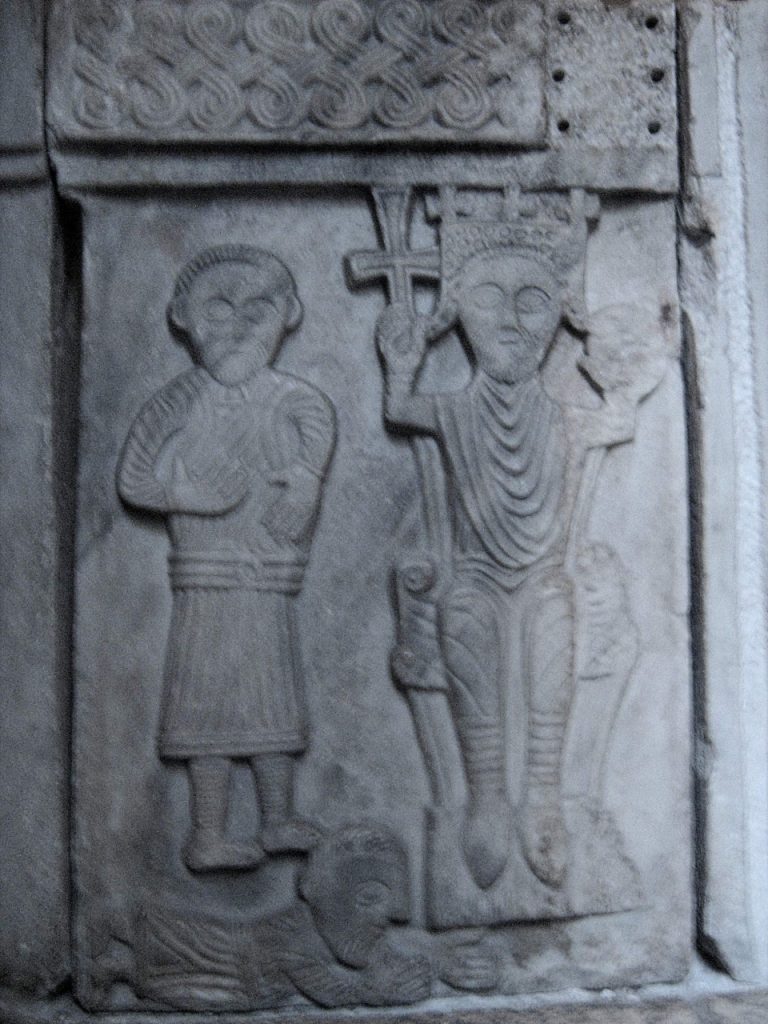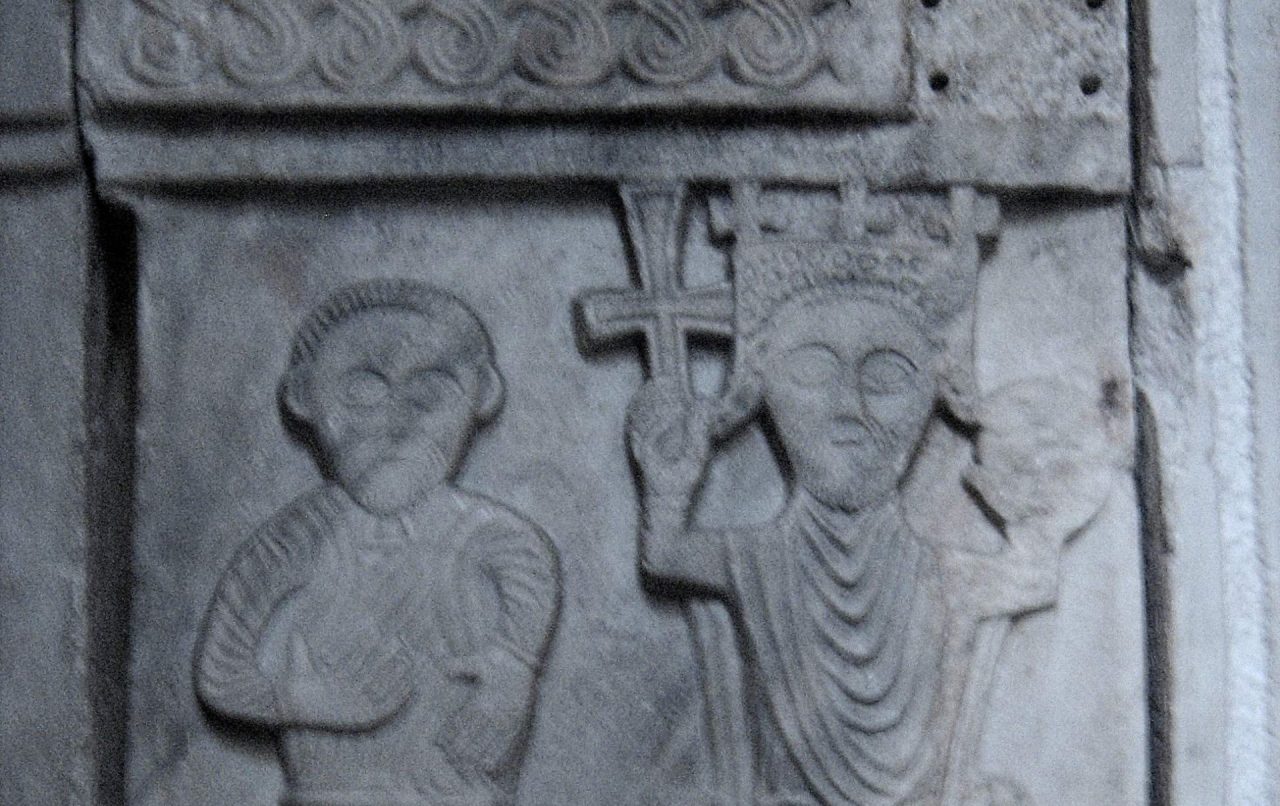
Mysterious figure in marble, 11th century. Image: CC BY-SA 3.0
Nestled within the serenity of Jupiter’s Temple in Split, Croatia, a pagan sanctuary turned into a baptistery during the medieval era, and etched onto the marble, an enigmatic relief of the king weaves together the grace of royalty and the allure of historical mystery, captivating all the lovers of medieval history. The enigmatic relief, cloaked in centuries of mystery, is a genuine historical enigma that mesmerizes with regal elegance and a magnetic allure.
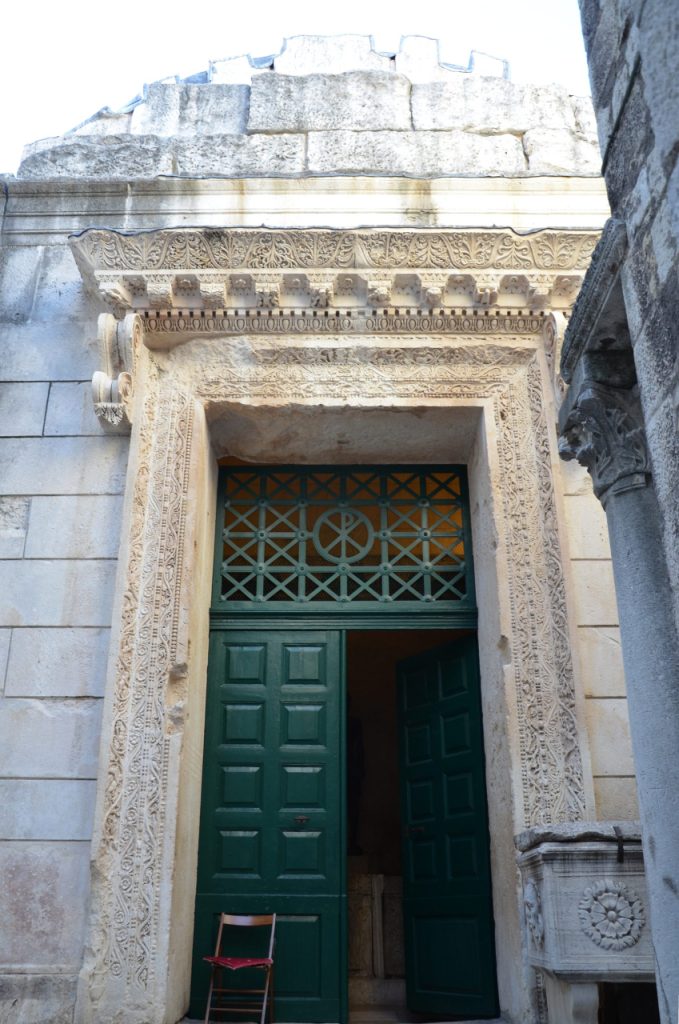
Dynamic World of 11-th Century Croatia
The relief is a legacy of the dynamic world of 11th-century Croatia, where political intrigue, social transformation, and international relations wove together a captivating tapestry of history. In the 11th century, Croatia navigated complex political landscapes. The kingdom balanced relationships with neighboring powers such as Hungary, Byzantine Empire, and the Papal States. Also, after the losses in the previous centuries, Croatian rulers tried to return Dalmatia under their government.
Amidst the political intricacies, 11th-century Croatia witnessed a profound social transformation. The rise of feudalism and the consolidation of power reshaped the societal structure, with nobles assuming influential roles and serfs experiencing evolving status. Moreover, the Croatian people witnessed a cultural renaissance, embracing new artistic expressions, architectural achievements, and intellectual pursuits. The fusion of indigenous traditions with influences from neighboring realms fostered a vibrant cultural tapestry, shaping the identity of Croatia and fostering a spirit of intellectual curiosity.
In the context of international relations, Croatia‘s position as a bridge between East and West bestowed upon it a unique significance. Its location at the crossroads of trade routes facilitated economic prosperity and cultural exchange. Through vibrant port cities such as Zadar and Dubrovnik, Croatia became a melting pot of ideas, goods, and influences, attracting merchants, scholars, and travelers from distant lands. This cultural melting pot not only enriched Croatian society but also positioned the kingdom as an influential player in the global arena, with its merchants and diplomats fostering connections that spanned continents.
Mysterious Figure Carved in Marble
The relief, portraying a mysterious visage of the Croatian ruler, is the oldest such representation in the country’s history. It is carved in the 11th century.
The relief shows three men. On the right, there is a crowned ruler on the throne. He holds the royal orb in the left hand, and the cross in the right hand. On the left, there is a man who stands. His arms are in a position as if carrying an object that has been subsequently erased. But there are some traces left on his chest and stomach. On the bottom, the third man lies prostrate with his arms outstretched towards the throne, deeply bowing in prayer (proskynesis). Above the scene stretches a wide band adorned with interlaced ornamentation, while below it is a narrow, smooth band with faint traces of erased letters.
The relief of the king exudes an air of grandeur, with its striking details and masterful execution. The king’s countenance reflects authority and wisdom, emphasized by the intricate adornments and noble regalia that envelop him. His serene expression hints at a life steeped in honor and power. It is as if he watches over the Baptistery, imparting a sense of divine protection and guidance to all who enter.
Delving into the symbolism of this magnificent relief, we encounter a tapestry of meanings that intertwine to reveal a deeper narrative. The king’s presence symbolizes the divine right to rule, with his regal attire reflecting earthly power and the divine mandate bestowed upon monarchs. The relief, a fusion of religious and secular themes, pays homage to the intertwining of the spiritual and temporal realms during the Middle Ages.
Moreover, the intricate details of the relief, such as the crown, scepter, and richly textured garments, convey notions of leadership, sovereignty, and prosperity. They invite us to contemplate the delicate balance between earthly kingship and spiritual devotion. The relief thus serves as a reminder of the aspirations and ideals that guided medieval society.
Damnatio Memoriae?
Some experts claim the relief shows Christ the Savior, but others claim it depicts a righteous ruler, the Croatian king. Also, when it comes to the ruler, the opinions are divided. While some state the ruler is King Zvonimir (1075 – 1089), others think it is his predecessor Petar Krešimir IV (1058-1074).
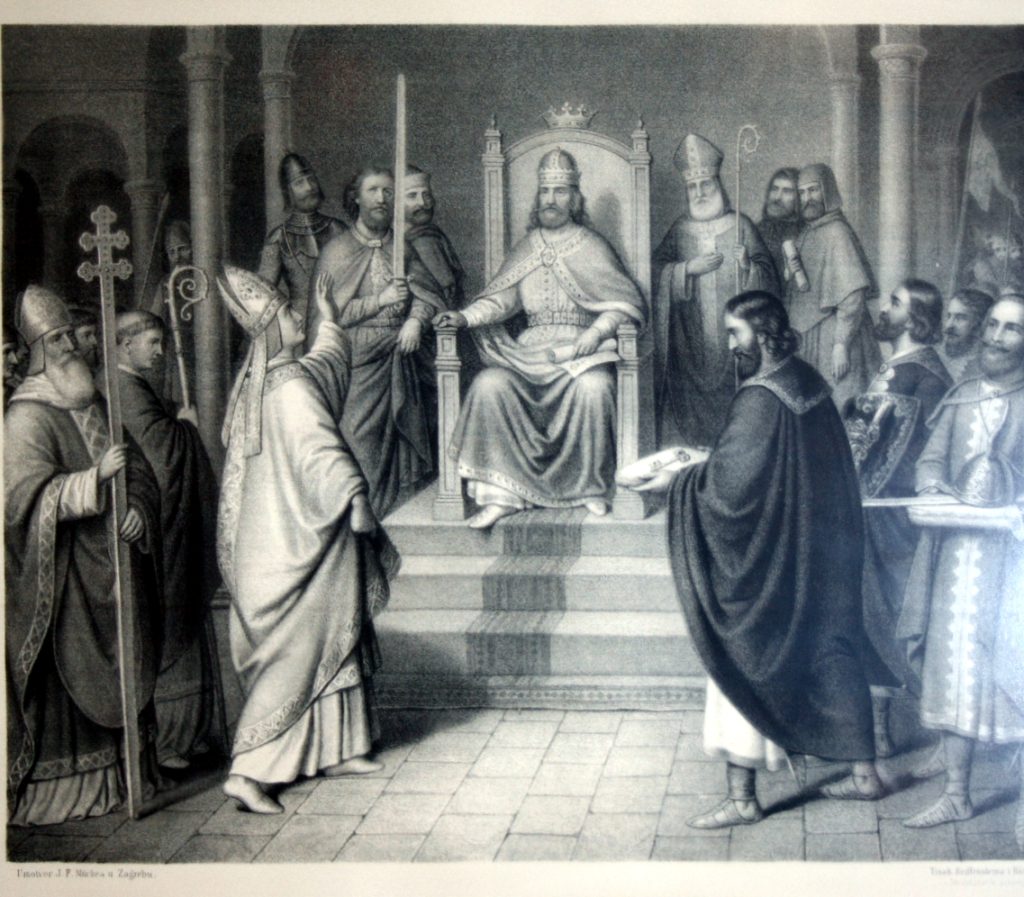
Adding to the mystery, the erased inscription fuels the intrigue. So, was it a sort of political damnatio memoriae? It remains an enigma.
11th Century Righteous Leader
Zvonimir’s Oath shows us what did it mean to be a righteous leader in 11th-century Croatia:
So, protecting the weak, establishing the rule of law, and going against the sale of human beings were, among others the tasks of Zvonimir.
The oath responds to a question about the meaning of the 11th-century righteous ruler. So, what is the secret of the relief? Who is depicted?
Petar Krešimir IV, the predecessor of Zvonimir, the most powerful Croatian ruler, expanded his government from rivers Raša to Drina, and from Drava to Neretva. Petar Krešimir allowed Rome to interfere in the home affairs of his kingdom and that led to the inner conflict. At the end of his reign, Petar Krešimir fought against Normans who occupied a significant part of Croatian territory but were expelled by the Venetian Republic the year after.
King Zvonimir was committed to creating justice and the welfare of his people. During his reign, feudal relations developed like in other European states of that era, and he introduced new titles like comes, baron, and vlastelin. Although he put a lot of effort to create welfare for his country, the inner conflicts and intrigues weakened the state. Also, as an ally of the Pope, Zvonimir was often occupied with war for the interests of the Pope. The people weren’t satisfied with that fact, so Zvonimir was killed at the assembly by Knin in the year 1089.
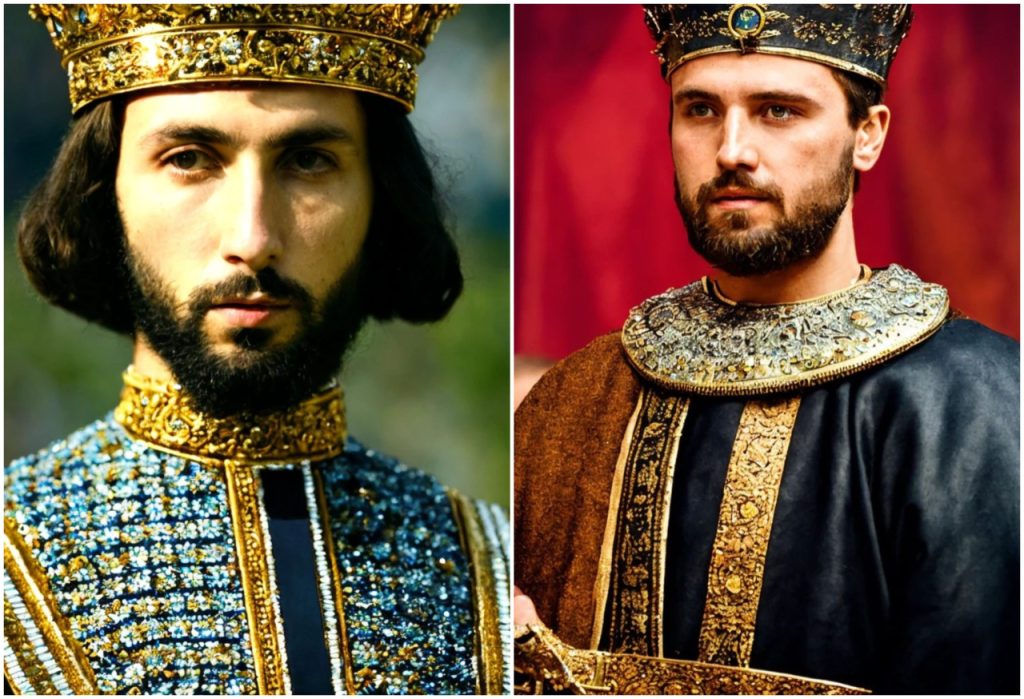
The scene of the relief lefts an observer with a deep appreciation for the fusion of art, history, and spirituality that characterizes this masterpiece. The relief’s ability to transport us back in time, evoking a sense of wonder and awe, is a testament to the enduring power of art to transcend centuries and captivate the human imagination.
Both kings were dedicated to the welfare of the country. But they were also a subject of intrigues. As there is no inscription, it’s hard to decipher which king, or who is on the relief. It appears that attempts were made to erase their memory, but history’s defiance has preserved the enigma, leaving us to unravel the legacy.
